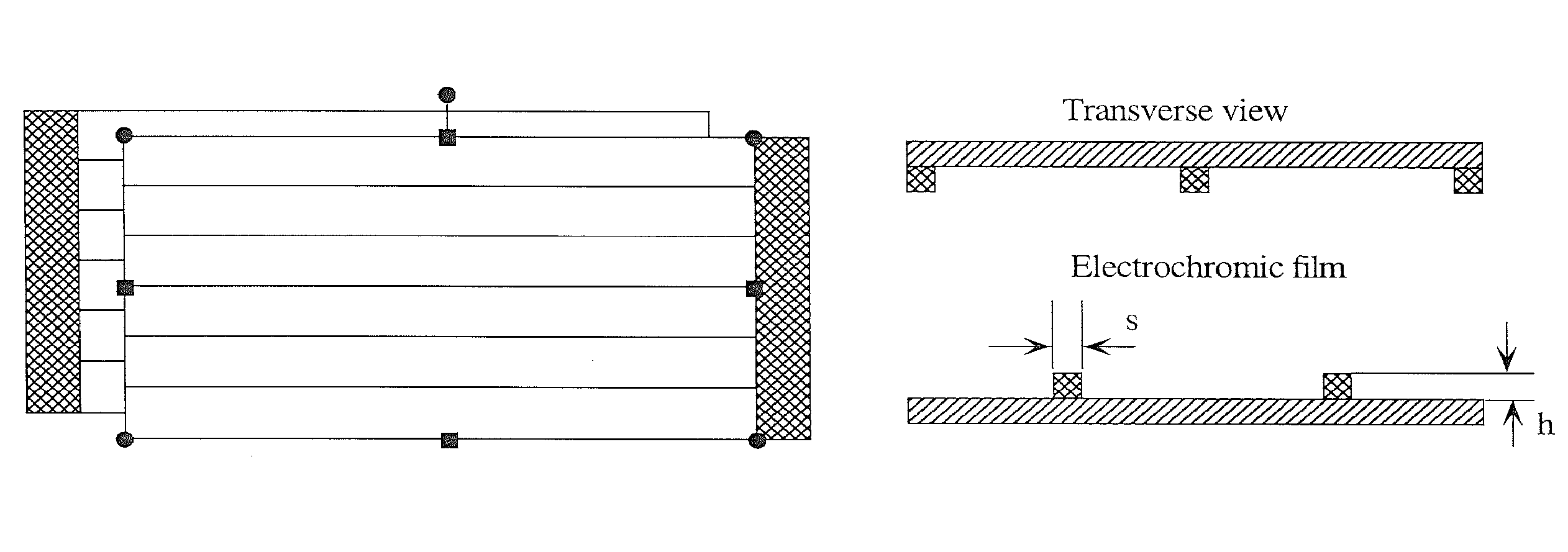Electrochromic device
a technology of electrochromic devices and electrodes, applied in the field of electrochromic devices, can solve the problems of not working properly on large-area displays or electrochromic devices, and not appropriately solving the above problems
- Summary
- Abstract
- Description
- Claims
- Application Information
AI Technical Summary
Problems solved by technology
Method used
Image
Examples
Embodiment Construction
[0021]FIG. 1 illustrates a solution to the aforementioned problems that utilizes films with an array of metal wires deposited or printed on the optically transmissive substrate, utilizing very conductive metals such as Ag, Cu, etc. By doing so at variable resolutions and densities, one can achieve suitable optical transmission, on one hand, and also resistivity as low as 10−3 ohm / sq or lower. These conductive supports can be produced by low cost processes, for example through an inkjet process or any other process like screen printing to deposit copper ink followed by photosintering, as described in U.S. Patent Application Ser. Nos. 61 / 053,574 and 61 / 081,539, which are incorporated by reference herein.
[0022]A problem is that in many of the applications, such as display and electrochromic windows, it is necessary to apply the electric field continuously, meaning that there are not any locations on the substrate where no conductive electrode is available. Referring to FIG. 2, printing...
PUM
| Property | Measurement | Unit |
|---|---|---|
| transparent | aaaaa | aaaaa |
| transparent | aaaaa | aaaaa |
| thickness | aaaaa | aaaaa |
Abstract
Description
Claims
Application Information
 Login to View More
Login to View More - R&D
- Intellectual Property
- Life Sciences
- Materials
- Tech Scout
- Unparalleled Data Quality
- Higher Quality Content
- 60% Fewer Hallucinations
Browse by: Latest US Patents, China's latest patents, Technical Efficacy Thesaurus, Application Domain, Technology Topic, Popular Technical Reports.
© 2025 PatSnap. All rights reserved.Legal|Privacy policy|Modern Slavery Act Transparency Statement|Sitemap|About US| Contact US: help@patsnap.com



